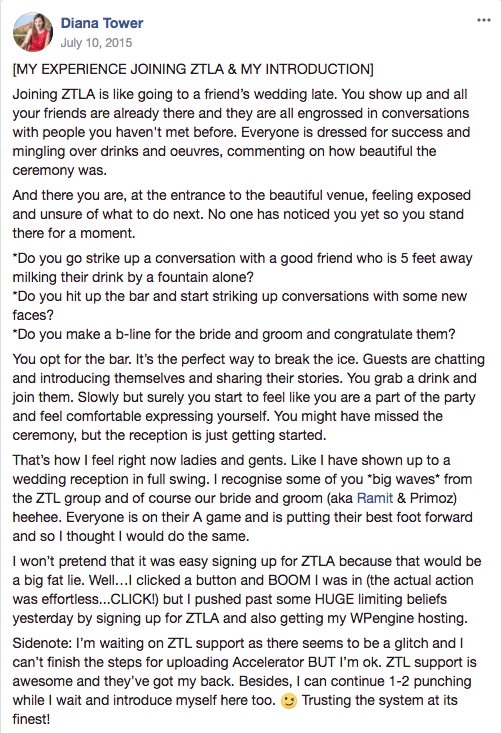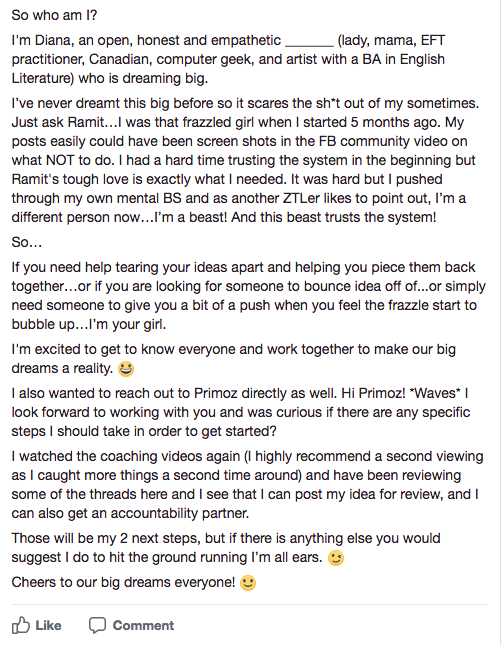Chapter 5 —
The “Nutella” effect: How to get your members hooked on your community.
Ok. So you’re sitting in your living room, innocently reading a book when all of a sudden your stomach makes this sound. You know the sound I’m talking about. The “hey bitch…put something in me or I’m gonna start raising hell down here” sound.
So you pop your Kindle on the table and pad off to the kitchen.
Nothing great in the fridge, so you open the pantry and you hear the gospel strike up chorus and golden light streams from the second shelf to your right.
Aaaaaaa….Nutella!
Aww yeah! That’s right. I’m-a gonna have me some Nutella…on a spoon…oh wait… I mean on toast. ON TOAST. I would never hide in the pantry and spoonfeed myself Nutella. Never.
Ok, I’m lying. I WOULD do that, have done it and if I had a jar of Nutella in my house right now it wouldn’t last longer than a day. I love it. I have to have it…and it’s pretty much crack.
Ok…now that I’ve fully embarrassed myself, I’d like to show you how you can have your students feel exactly the same way about your community.
Yup. That’s right. We’ll have them hiding in the pantry checking their updates and cheering on their fellow members in no time.
Before we get started though…there are a couple things I want to touch on.
What is the “late to the wedding” (LTTW) syndrome?
Alrighty folks. LTTW syndrome is a real thing. I experienced it myself and survived to share this beefy guide with you.
I remember it like it was yesterday.
I joined Accelerator (yes…the program I now manage the community for) and I was pretty much scared shitless. Here is what I posted though…and pointed a finger at LTTW.


Just incase you still aren’t clear…
LTTW is when you join a community and you feel like an outsider but you want to become an insider. You are on the sidelines trying to figure out a way to get involved without making a fool of yourself (cause we all want to be cool).
So here’s the thing. Almost 99% of your members will feel some form of LTTW when they join your program and it is YOUR job to vaccinate them.
How do you do that?
By triggering the emotions that they need and want to feel at every chance they get (as I mentioned in the last chapter).
I touched on the importance of onboarding earlier and I’m going to dive a bit deeper now as it’s really the foundation to kicking LTTW’s ass, without chaining you to your desk and spending all your time in your community.
What is onboarding and how does it help engage your members?
Just incase you think that onboarding is a sport where you sit on a board, let me clarify. Onboarding is the process of integrating and familiarizing a new student into your course and community.
In other words, it's the process of taking someone who looks like bambi in headlights to one chilled out mofo who works through your course material with ease and mingles with other students in your community like a badass.
Onboarding is vital to the success of your students and your task of engaging them, for many reasons. If a student feels comfortable and like they fully understand how to get the most from your program and community they will…[wait for it…wait for it]...USE IT!
That’s right. They will actually stand a chance of FINISHING your program, while sharing their experience, asking questions and supporting others students along the way in your community.
But how does this help you?
Well my friend, look at it this way. Instead of you sitting at your community PMing with your students every 10 minutes answering the EXACT SAME QUESTIONS, you’ll take all those doubts and A the shit out of them when you onboard those students.
You’re not only going to make them feel like a member of the wedding party, you’re going to save time and your sanity in the process.
What needs to be addressed during onboarding?
Now, in terms of format, onboarding can happen in several ways and here are the most common that I highly recommend you bust out for your students.
- Clear group/channel descriptions.
- Community guidelines (this could be a post or even an ultimate guide/FAQ)
- An automated onboarding email sequence that welcomes them, directs them to helpful resources and gives them call to actions to help them kickstart the course and community..
- Welcome thread/post in the your community.
- Private messaging with each member.
If you master these 5 keys to onboarding, you’ll dramatically reduce the amount of “policing” your community requires and boost the likelihood that your students will work through and complete the course.
Keep Reading...




